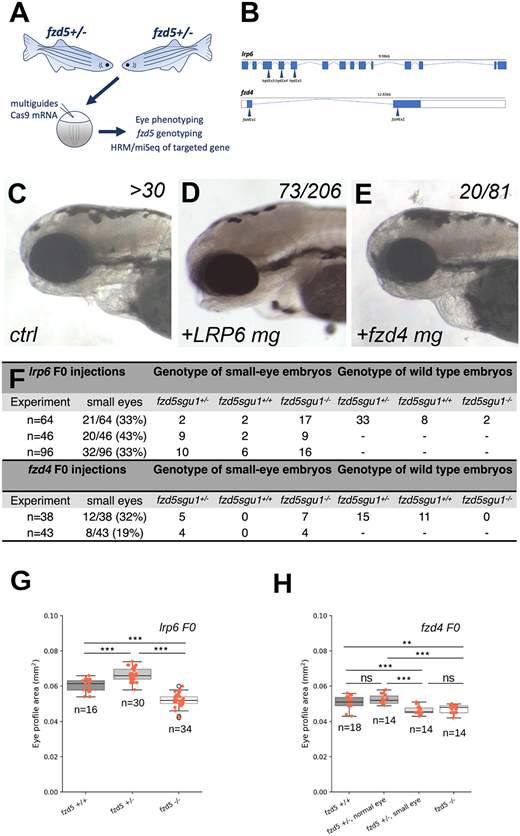Fig. 6 Abrogation of Fzd4, but not Lrp6, function in fzd5sgu1 heterozygote embryos results in smaller eyes. (A) Experimental pipeline: fzd5sgu1/+ adult carriers were mated, and offspring were injected at one-cell stage with CRISPR guides against the corresponding gene, plus Cas9 mRNA. Embryos were categorised according to eye phenotype, genotyped for fzd5sgu1 mutation and sequenced to confirm the guides' gene editing. HRM, high-resolution melt. (B) Schematic representation of the guides used to interfere with lrp6 (top) and fzd4 (bottom) activity. (C-E) Lateral views, with anterior to the left, of 72 hpf control (C), lrp6 (D) and fzd4 F0 injected fzd5sgu1 embryos. Numbers of embryos in the clutch displaying the phenotype are detailed at the top-right corner of each panel. (F) Quantification of lrp6 and fzd4 F0 injected embryos derived from a fzd5sgu1/+ incross for three and two independent experiments, respectively, detailing the number of embryos showing small eyes and their associated genotypes. (G,H) Projected eye area quantifications of fzd5sgu1 homozygotes and siblings F0 injected with lrp6 (G) and fzd4 (H) CRISPR guides. Box plots represent the median and 25-75th percentiles; whiskers indicate the range of the data. A pairwise Tukey HSD post-hoc test revealed statistically significant eye size differences between the different genotypic groups. ns, not significant; **P<0.01, ***P<0.001. Each data point represents one eye.
Image
Figure Caption
Figure Data
Acknowledgments
This image is the copyrighted work of the attributed author or publisher, and
ZFIN has permission only to display this image to its users.
Additional permissions should be obtained from the applicable author or publisher of the image.
Full text @ Dis. Model. Mech.

